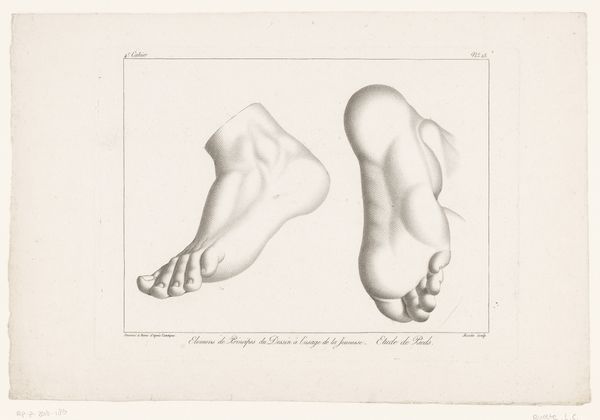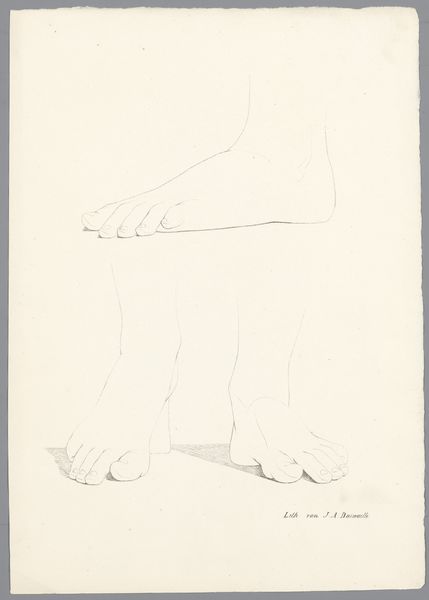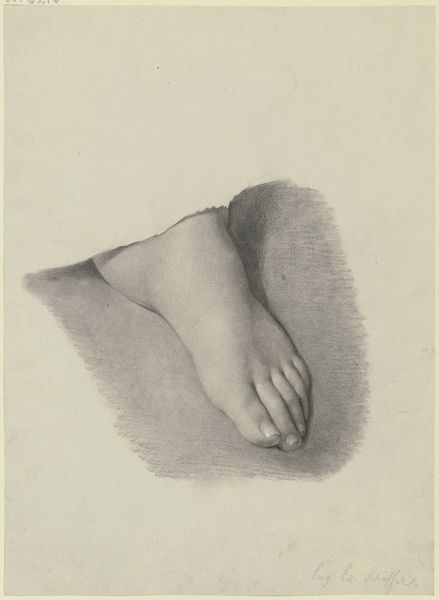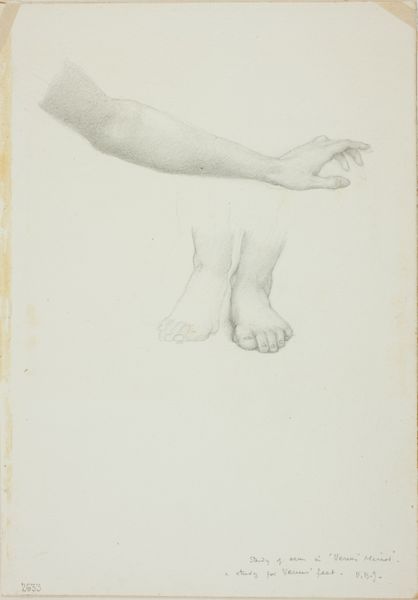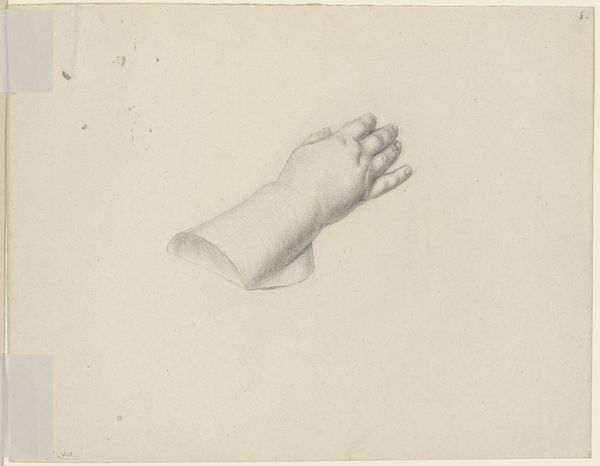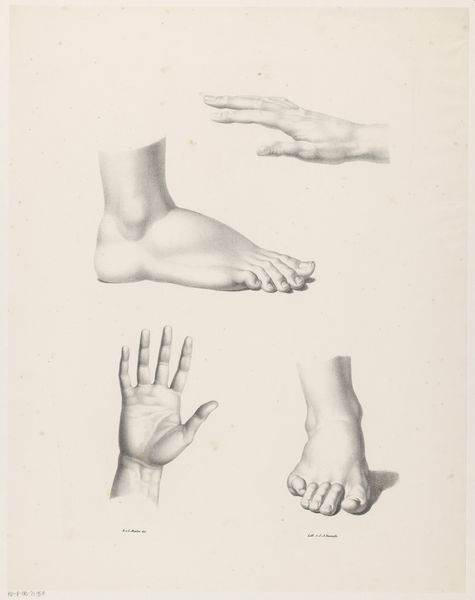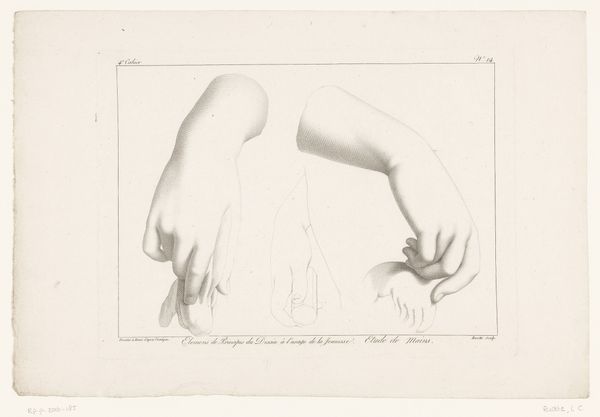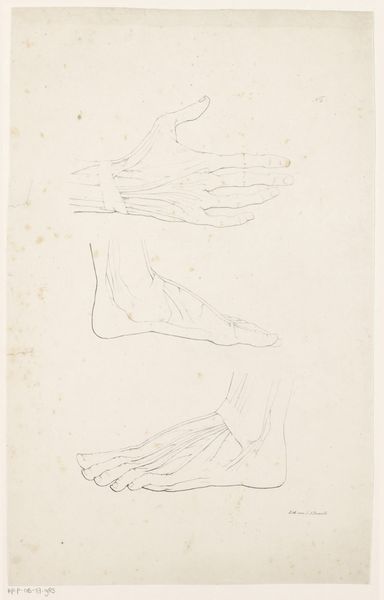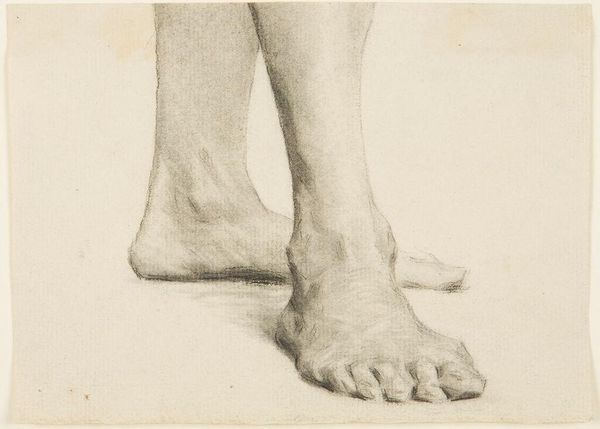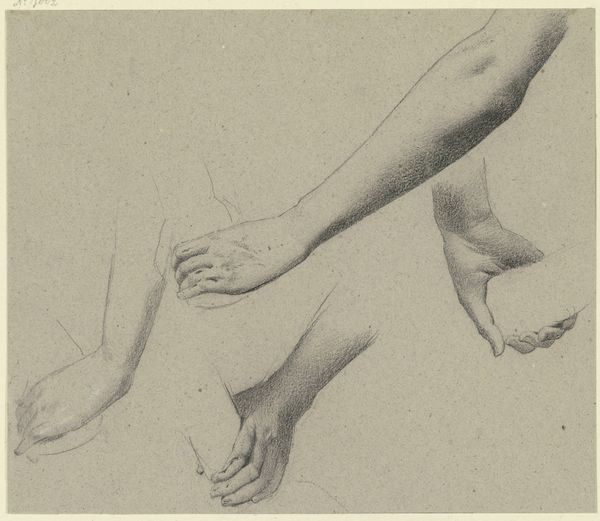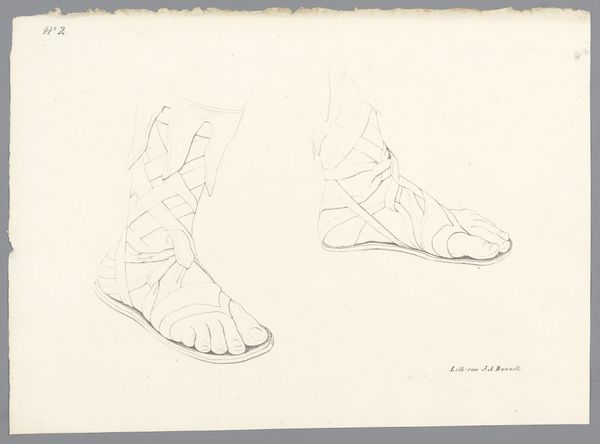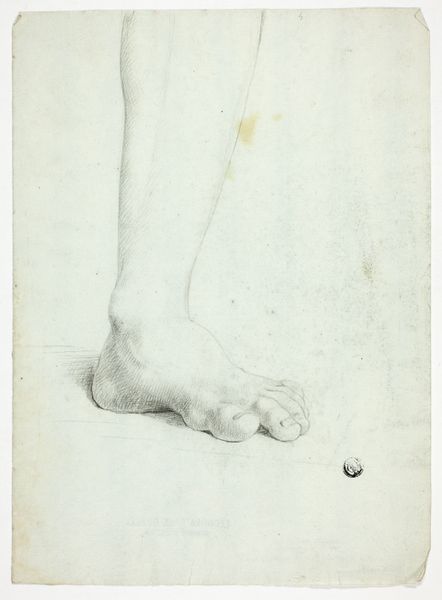
drawing, paper, pencil
#
portrait
#
pencil drawn
#
drawing
#
light pencil work
#
pencil sketch
#
classical-realism
#
figuration
#
paper
#
form
#
pencil drawing
#
sketch
#
pencil
#
line
#
pencil work
#
history-painting
#
academic-art
Dimensions: height 229 mm, width 314 mm
Copyright: Rijks Museum: Open Domain
Curator: This is "Compositie met twee voeten," or "Composition with Two Feet," a pencil drawing by Louis Charles Ruotte. It was created sometime between 1764 and 1806 and is held here at the Rijksmuseum. Editor: The immediate feeling is… detached, clinical almost. Just the feet, cropped like that, renders the body anonymous. What statement do disembodied feet make? Curator: The artwork reflects academic practice, focusing on mastering form, particularly human anatomy, which became vital to Western art, especially from the Renaissance onward. This practice echoes classical ideals rediscovered and re-emphasized in artistic education, influencing artists like Ruotte. Editor: Yes, and feet carry quite the symbolic weight. Think about the Greek ideal – sculpted feet, a symbol of stability, beauty, and connection to the earth. These feet though, resting on a stone plinth…they evoke a sense of ancient ruins, fragments of something greater, lost and possibly idealized. Curator: Interesting, this kind of drawing often acted as an essential step for artists to win patronage. Displaying mastery like this, through accurate depiction, signaled skill and readiness for commissions of larger scale history paintings. Think of it as a visual resume! Editor: So, the detached quality could be Ruotte wanting to objectively display skill? However, the classical aesthetic here links us back to symbols of power and strength through the ages; this adds layers of understanding to something initially perceived as a mere academic exercise. Curator: Precisely! And considering this period, the late 18th century, revolutionary sentiments challenged traditional hierarchies. Academic art, ironically, was both upholding classic ideals and inadvertently becoming an arena for subtly renegotiating power. Editor: I’d agree. I'm left wondering if that faint grid is not just for guidance. Perhaps the constraints themselves show that beauty needs proportion. It provides some context about the meaning of these individual "elements," as referenced in the title's inscription. Curator: So, by examining just two feet, we see not only classical admiration but how academic systems were structured to create a trained artistic workforce! Editor: Indeed. From disconnected fragments to foundational pillars - it shows you the symbolic significance an artistic choice holds for how we create cultural memory and meaning, then and now.
Comments
No comments
Be the first to comment and join the conversation on the ultimate creative platform.

